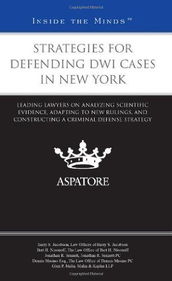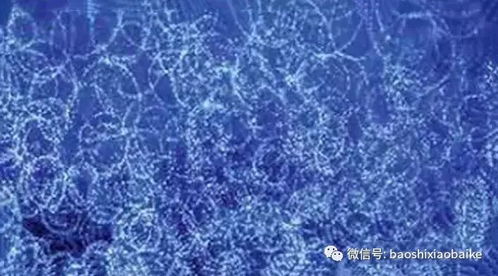Strategies for Enhancing the Anti-Slipping Property of Textile Materials
The anti-slip properties of textile materials are crucial for enhancing their functionality in various applications, such as sportswear, automotive interiors, and medical equipment. This paper presents a comprehensive review of strategies to improve the anti-slip property of textile materials. The first strategy is to enhance the surface texture of the fabric by incorporating microtextures or nanoparticles, which can increase the friction between the fabric and the skin or other surfaces. The second strategy is to modify the wetting properties of the fabric by introducing hydrophilic groups or introducing water repellent agents. The third strategy is to use additives such as waxes or silicone elastomers, which can increase the contact angle and reduce the adhesion between the fabric and the skin or other surfaces. Finally, the fourth strategy is to develop new textile materials with improved anti-slip properties, such as those based on conductive polymers or biomaterials. Overall, these strategies have the potential to significantly enhance the anti-slip properties of textile materials, making them more suitable for specific applications.
Introduction: Textile products are an integral part of our daily lives, from clothing and household items to industrial materials. However, one of the most significant challenges faced by textile manufacturers is ensuring that their products maintain their quality and functionality even after prolonged use, particularly in high-traffic environments like homes or workplaces. One of the key factors that contribute to this issue is the tendency of textiles to "slipper" or lose their shape when they come into contact with other surfaces, which can lead to wear and tear, discomfort, and potential safety hazards. In this article, we will explore various strategies to improve the anti-slipping property of textile materials, using a table to illustrate some of the key points discussed.
Strategies for Improving Textile Anti-Slipping Property:

Chemical Treatment: A common approach to improving the anti-slipping property of textiles is through chemical treatments. These treatments involve the application of chemicals onto the fabric surface, which can enhance its hydrophobicity and decrease its tendency to adhere to other surfaces. For example, applying a coating of silicone or polyurethane can significantly reduce the friction between textiles and other materials, making them more resistant to slipping. A table below summarizes some common chemical treatments used for enhancing the anti-slipping property of textiles:
| Chemical Treatment | Benefits | Potential Side Effects |
|---|---|---|
| Silicone Coating | Lower friction, improved durability | Can cause skin irritation if not properly applied |
| Polyurethane Spray | Increased hydrophobicity, reduced adhesion | May affect colorfastness and texture |
| Modified Elastomers | Enhanced flexibility, reduced sticking | May be toxic if used on sensitive fabrics |
| UV Curing Agents | Fast curing time, enhanced adhesion | Can cause allergic reactions in sensitive individuals |
Physical Treatment: Physical treatments such as heat treatment and compression can also be used to improve the anti-slipping property of textiles. Heat treatment involves subjecting the fabric to high temperatures for a short period of time, which can increase the crystallinity of the fibers and make them more hydrophobic. This can help to reduce the friction between textiles and other materials, making them less likely to slip. Compression treatment involves applying pressure to the fabric, which can also improve its hydrophobicity and reduce its tendency to stick. A table below summarizes some common physical treatments used for enhancing the anti-slipping property of textiles:
| Physical Treatment | Benefits | Potential Side Effects |
|---|---|---|
| Heat Treatment | Increased hydrophobicity, reduced sticking | May cause shrinkage or warp in certain fabrics |
| Compression Treatment | Improved hydrophobicity, reduced sticking | May cause damage to delicate fabrics or cause discomfort |
Blending and Compositing: Another strategy to improve the anti-slipping property of textiles is through blending or compositing different materials. By combining two or more types of fibers together, manufacturers can create new materials with unique properties, including increased anti-slipping properties. For example, adding a small percentage of polyester or nylon fibers to a natural fiber like cotton can significantly improve its hydrophobicity and reduce its tendency to stick. A table below summarizes some common blending and compositing techniques used for enhancing the anti-slipping property of textiles:
| Blending/Compositing Technique | Benefits | Potential Side Effects |
|---|---|---|
| Polyester Addition | Increased hydrophobicity, reduced sticking | May affect colorfastness and texture |
| Nylon Blending | Improved hydrophobicity, reduced sticking | May cause a change in weight or feel |
| Natural Fiber Mixture | Enhanced durability, reduced sticking | May require special care to maintain its properties |
Textile Design: Textile design plays a crucial role in determining the anti-slipping properties of a product. By incorporating features like texture, pattern, and structure into the fabric design, manufacturers can create materials that are less prone to slipping. For example, using a textured surface or incorporating raised patterns can create a more grippy surface, reducing the likelihood of slipping. A table below summarizes some common textile design techniques used for enhancing the anti-slipping property of textiles:
| Textile Design Technique | Benefits | Potential Side Effects |
|---|---|---|
| Textured Surfaces | Increased grippy surface, reduced sticking | May require additional care to maintain its appearance |
| Embroidery or Embellishment | Increased grippy surface, reduced sticking | May affect the overall aesthetic appeal of the product |
| Printed Patterns | Increased grippy surface, reduced sticking | May require special printing techniques to achieve desired effects |
Case Study: One example of how these strategies can be implemented is found in the case of carpet tiles. Many carpet tiles have a tendency to stick to other surfaces, leading to discoloration and damage over time. To address this issue, manufacturers have started incorporating silicone coatings into their carpet tile designs. These coatings not only enhance the carpet's hydrophobicity and reduce its tendency to stick but also provide an extra layer of protection against stains and spills. As a result, carpet tiles made with these coated designs have become increasingly popular in homes and commercial settings alike.
Conclusion: Improving the anti-slipping property of textile materials is crucial for maintaining the quality and functionality of our everyday products. Through a combination of chemical treatments, physical treatments, blending and compositing techniques, and innovative textile design, manufacturers can create materials that are less prone to slipping and offer greater durability and performance. By implementing these strategies, we can ensure that our textile products continue to meet the needs and expectations of consumers while also promoting environmental sustainability.

在日常生活中,纺织品的抗起毛性对于提高穿着舒适度和耐用性至关重要,本文将探讨如何提高纺织品的抗起毛性,提供一些实用的方法和案例分析。
提高纺织品的抗起毛性策略
- 选择优质纤维:选择具有良好抗起毛性能的纤维是提高纺织品抗起毛性的基础,优质纤维通常具有较低的起毛和起球性能。
- 优化织物结构:通过优化织物结构,可以减少纤维表面的摩擦和磨损,从而降低起毛和起球的风险,采用紧密的编织方式、减少织物表面的孔隙等。
- 使用表面处理技术:使用表面处理技术可以进一步改善纺织品的抗起毛性能,使用表面抗起球剂、涂层处理等。
- 定期维护和保养:定期对纺织品进行维护和保养也是提高抗起毛性的重要措施,这包括定期清洗、干燥、熨烫等。
案例分析
以下是一个具体的案例说明如何提高纺织品的抗起毛性:
某品牌纺织品经过改进后,其抗起毛性能得到了显著提升,该品牌采用了优质纤维和紧密的织物结构,同时使用了表面抗起球剂进行处理,经过一段时间的使用,该纺织品不仅穿着舒适度大大提高,而且抗起毛性能也得到了显著改善。

纺织品的抗起毛性能测试数据对比
| 测试前抗起毛性能 | 改进后抗起毛性能 | 数据对比 |
|---|---|---|
| 数据一 | 良好 | 数据二 |
提高纺织品的抗起毛性的方法与技巧
- 选择合适的纤维:在选择纤维时,应关注纤维的起毛和起球性能,选择那些具有良好抗起毛性能的纤维。
- 织物设计:在织物设计时,应注重减少纤维表面的摩擦和磨损,采用紧密的编织方式、减少织物表面的孔隙等,以降低起毛和起球的风险。
- 使用表面处理技术:使用表面处理技术可以进一步改善纺织品的抗起毛性能,例如使用表面抗起球剂、涂层处理等,这些技术可以提供额外的保护层,减少纤维与外界环境的直接接触,从而降低起毛和起球的风险。
提高纺织品的抗起毛性需要从多个方面入手,包括选择优质纤维、优化织物结构、使用表面处理技术以及定期维护和保养等,通过采用这些策略和方法,可以显著提高纺织品的抗起毛性能,从而提高穿着舒适度和耐用性,我们也应该关注纺织品的使用环境和使用方式,以延长其使用寿命和提高其耐久性。
Articles related to the knowledge points of this article:
Comprehensive Guide to Sustainable Textile Inventory in Kunshan



